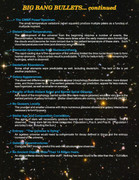Nuclear Theory
[Submitted on 7 Feb 2022]
Kaon meson condensate in neutron star matter including hyperons
Fu Ma, Wenjun Guo, Chen Wu
[Submitted on 7 Feb 2022]
Kaon meson condensate in neutron star matter including hyperons
Fu Ma, Wenjun Guo, Chen Wu
The recent measurement of the mass of neutron stars (PSR J1614 - 2230, PSR J0348 + 0432, MSP J0740 + 6620) restricts the lower limit ∼2M⊙ of the maximum mass of such compact stars, making it possible for dense matter to exist in massive stars. The relativistic mean field theory with parameter sets FSUGold including Kaon condensation is used to describe the properties of neutron stars in β equilibrium. Through careful choice of the parameter of the σ-cut cσ, we are able to produce a maximum mass neutron star with Kaon condensation heavier than 2M⊙, and we find that the parameter Λν of the ρ−ω interaction term in this model has a significant effect on K− condensation. In the case of using σ-cut scheme, K− condensation occurs only when the ρ−ω interaction Λν is switched off.
| Comments: | 9 pages, 9 figures |
| Subjects: | Nuclear Theory (nucl-th) |
| Cite as: | arXiv:2202.03001 [nucl-th] |
| (or arXiv:2202.03001v1 [nucl-th] for this version) | |
| https://doi.org/10.48550/arXiv.2202.03001 Focus to learn more | |
| Journal reference: | Phys. Rev. C 2022 |
| Related DOI: | https://doi.org/10.1103/PhysRevC.105.015807 Focus to learn more |



